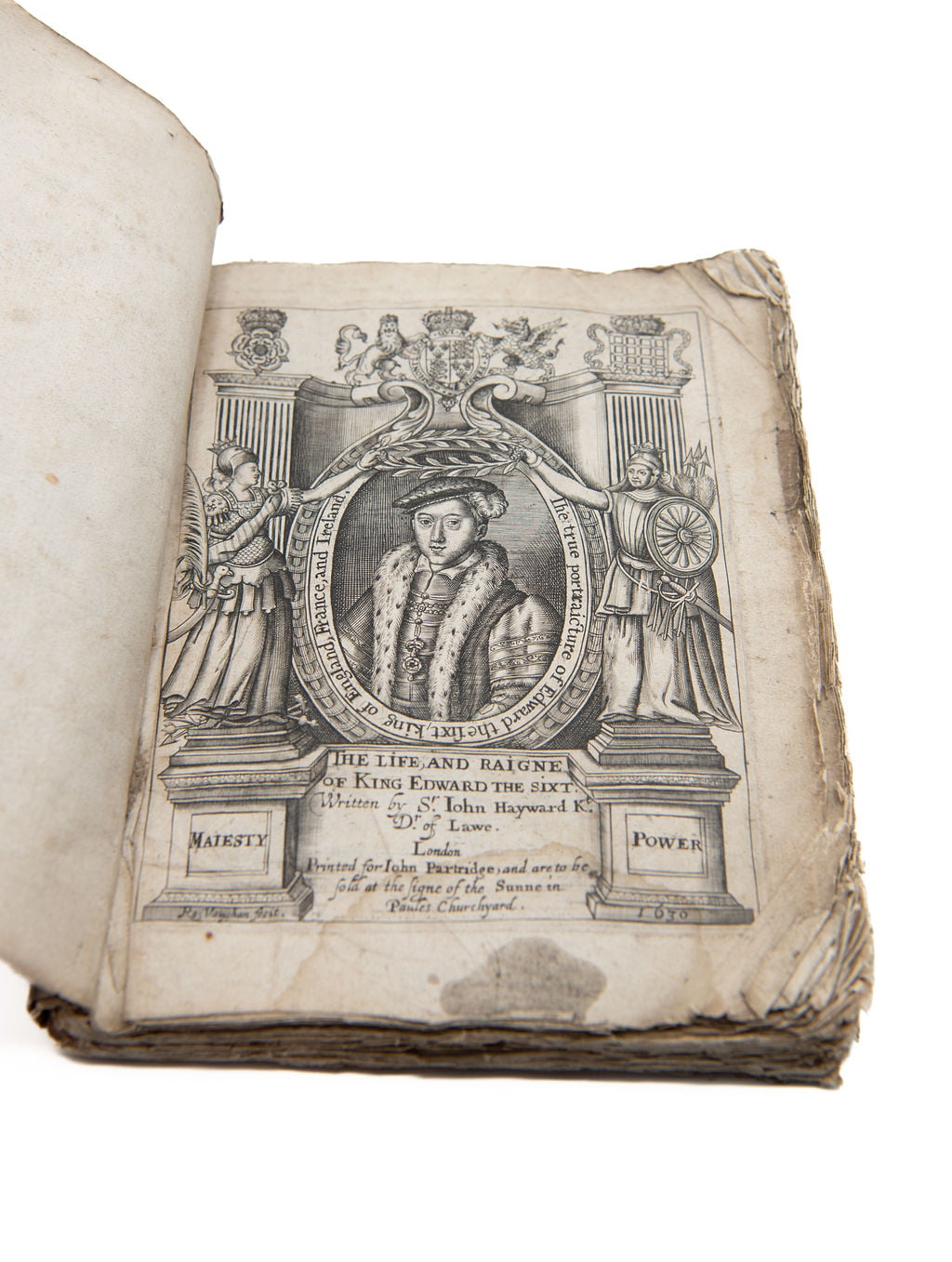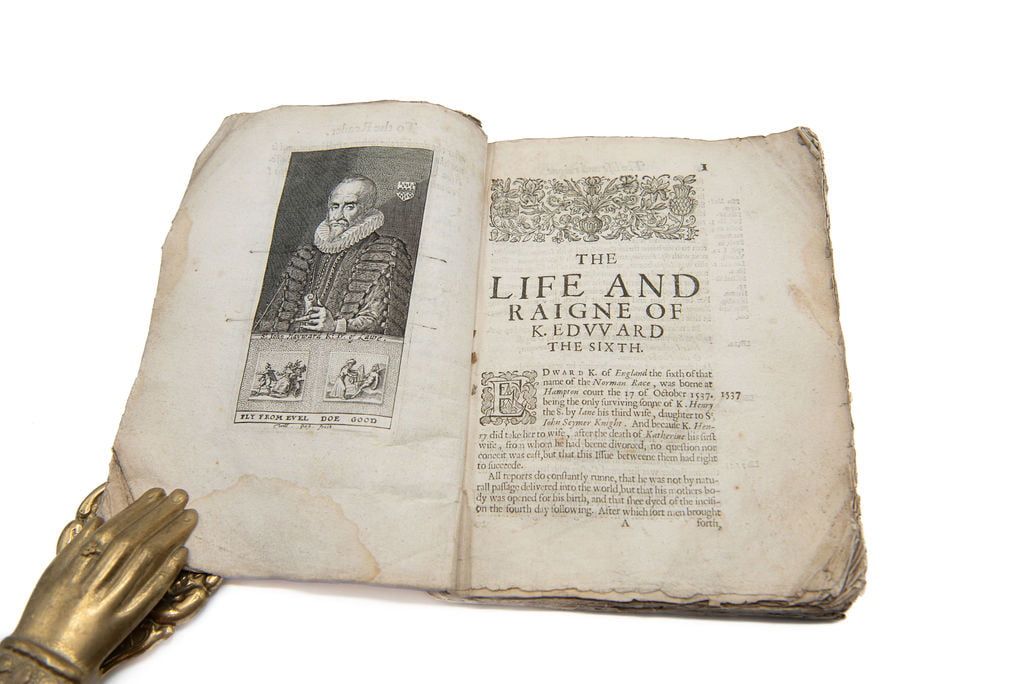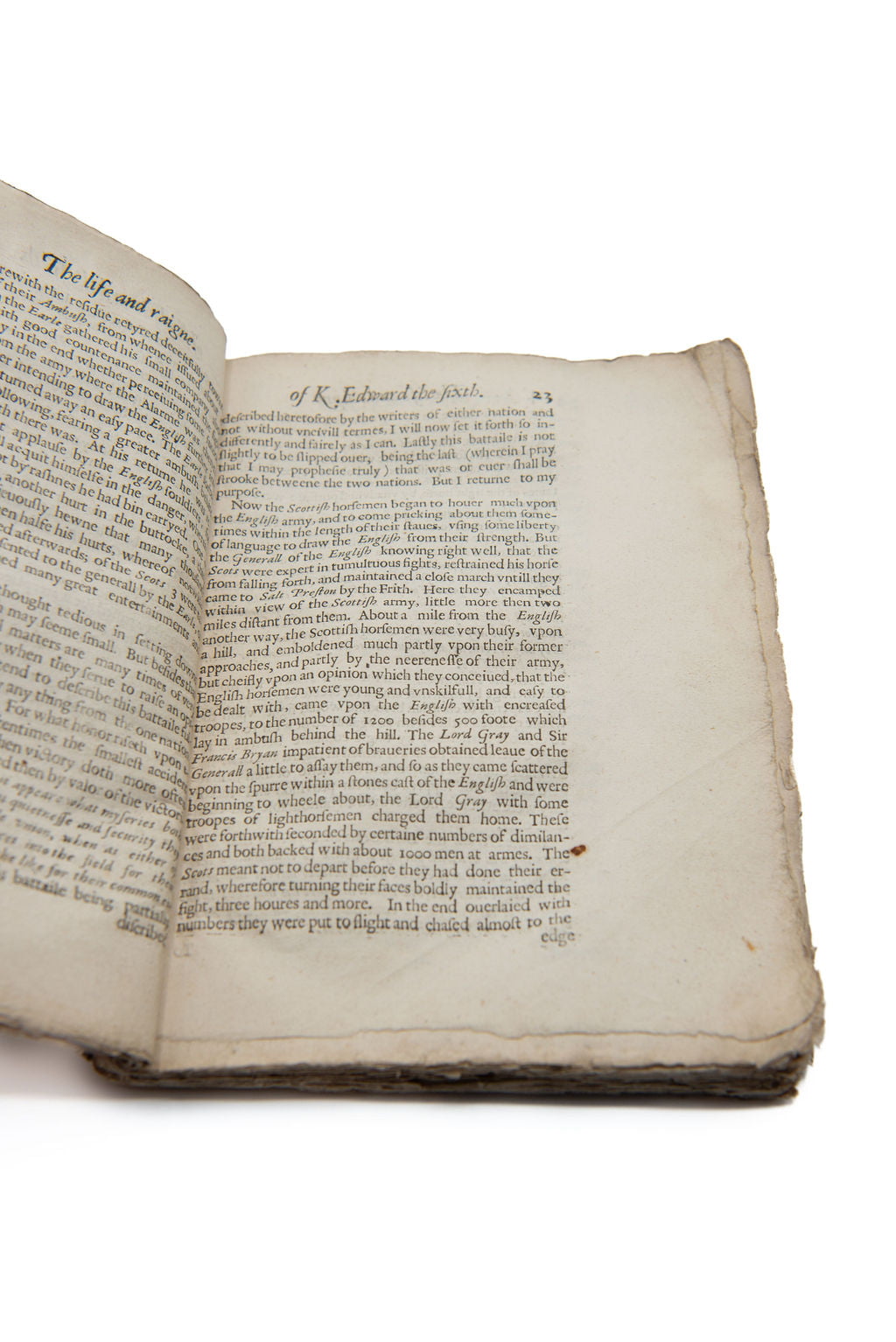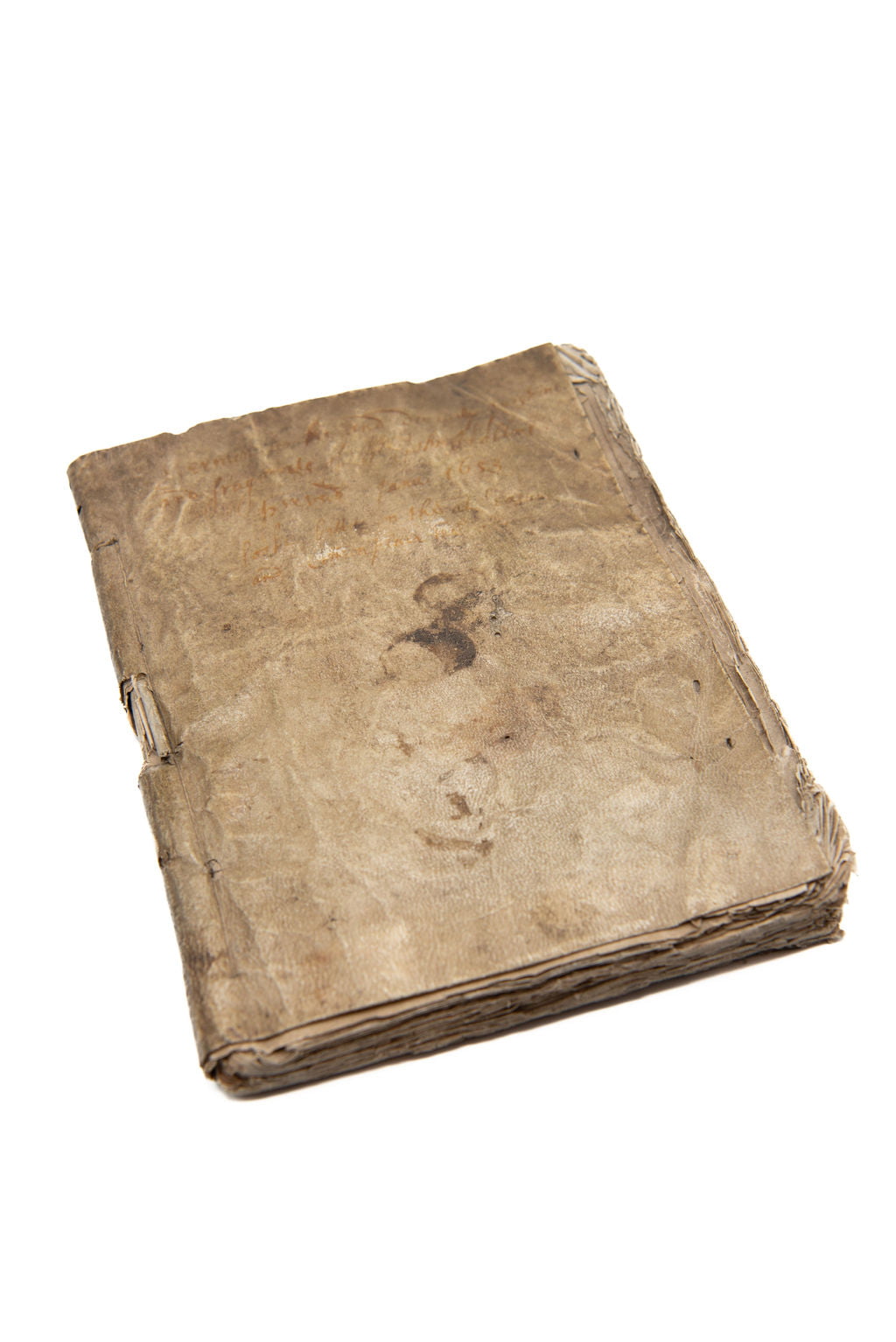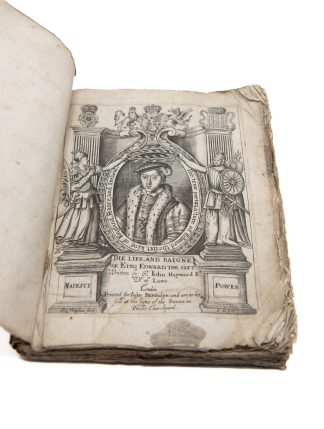HAYWARD, Sir John
AN ENTIRELY UNSOPHISTICATED AND UNTRIMMED COPY
The life, and raigne of King Edward the Sixt
London, printed [by Eliot’s Court Press, and J. Lichfield at Oxford?] for Iohn Partridge, 1630£1,650.00
FIRST EDITION, First issue. 4to. pp. [vi], 179, [i]. lacking first blank. L3, M3, N3, and Q4 are cancels, in slightly smaller type. Roman letter with some Italic. Engraved architectural title page with portrait of Edward VI in oval at centre, figures of majesty and power at sides holding a laurel wreath, Royal arms above, signed ‘Ro. Vaughan’ (Johnson p. 56: 7), engraved portrait of John Hayward, with allegorical figures below, on page vi signed ‘Will. Pass.’, woodcut printer’s device on verso of last, floriated woodcut initials typographical headpieces. Light age yellowing, small water-stain in lower margins of first few leaves, a few thumb marks in places, small oil stain at gutter of last three leaves, corners a little dog-eared at beginning and end, small tear in upper margin of second leaf just touching running headline on verso, engraved title and verso of last a little dusty. A good, unsophisticated, full margined copy, entirely uncut, stab bound as issued in its original limp vellum wraps, illegible ms. note dated 1653 on front cover, covers a little soiled and creased.
First edition of Sir John Hayward’s posthumous ‘Life and Raigne of King Edward VI,’ the earliest biography of the last Tudor king, reprinted in 1636, and again in White Kennett’s Complete History of England in 1706. Considering the environment in which Hayward wrote, the influence this pioneering work has had on attitudes toward the mid-Tudor period is marked. Although few contemporary scholars would accept Hayward’s interpretation of the reign at face value, his work influenced historical thinking for over three centuries. Hayward was imprisoned by Elizabeth I for his controversial book on Henry IV and his involvement in the conspiracy of the Earl of Essex in 1600. Edward VI (1537-53), the only son of Henry VIII, ruled in a period, not only of dramatic religious change, but also of warfare, political intrigue, and popular rebellion. Hayward wrote his biography of Edward at the end of the Jacobean period when major challenges were facing the monarchy. He proclaimed that his narrative was intended to be a “monument” to the “un-perishable fame” of the king and focused his efforts on court politics, foreign policy, and military affairs. “Sir John Hayward’s full-scale ‘Life and Raigne of King Edward the Sixt, .. first circulated in manuscript in the 1620’s before its publication in 1630. As Lisa Richardson has demonstrated in her recent study of Hayward, he was soaked in the writings of Tacitus… Hayward also knew well Foxe’s work in ‘Acts and Monuments’, and used him much elsewhere in his historical work, yet here, in account of a reign dominated by violent religious change, his only substantial debt to Foxe is his admiring description of the King himself. …What interests him most is Foxes anecdote about the king’s supposed efforts at clemency for Joan Bocher and George van Parris, contrasting with the more bloodthirsty attitudes of Edward’s advisers. … One of the contemporary sources which Hayward was particularly ready to use was Edward VI’s personal chronicle. .. the Chronicle minimizes his preoccupation with religion and gives the impression of a boy-king with primarily secular concerns. Overall, Hayward’s distaste for what happened in the Edwardian reformation is clear.” Diarmaid MacCulloch. ‘The Boy King: Edward VI and the Protestant Reformation’. An entirely unsophisticated and untrimmed copy of this important history.
STC 12998. Pforzheimer, 459. Lowndes III 1018.In stock


